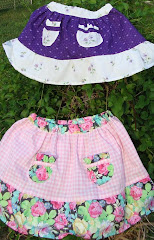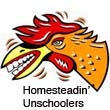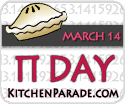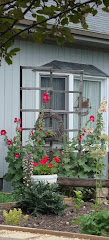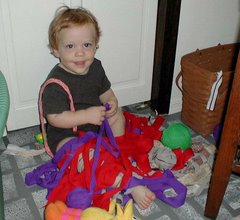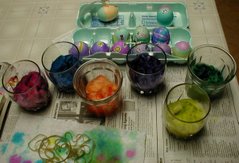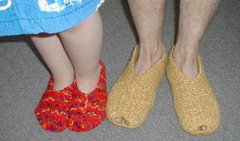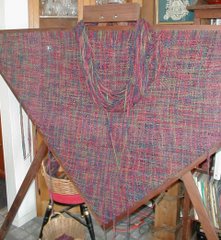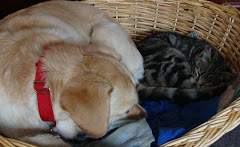Over two years ago I sat in on
Sue Becker's workshop at a homeschool convention and nodded along with most of what she had to say. The net result was we've switched from baking our own bread from store-bought flour to grinding wheat berries to make our own bread. It is an on-going process -- we still buy the occasional loaf of sliced bread and bag of unbleached flour but DS complains if he doesn't have whole grain bread for toast with his breakfast and (with apologies to Ritz) everything tastes better when it sits on a whole grain slice.
I've been using the Becker's recipe for whole grain bread and making it in the
Zojirushi which is an absolutely wonderful bread machine. But the last couple of times I've made bread, I've used a modified version of
Sue Gregg's recipe from her "Whole Grain Baking" cookbook. I altered it because I like to bake the bread in a long pullman loaf pan and to get the texture like we prefer it, I add milk or yogurt for some or all of the water indicated and sometimes add an egg or two.
1 1/2 cup yogurt
2/3 cup water
2 tbs apple cider vinegar
4 cups fresh-ground whole wheat flour
1 tbs yeast (I use
saf-instant yeast)
1/2 tsp baking soda
1/3 cup butter, softened or oil (butter improves the texture but I sometimes use oil)
1/3 cup honey
1 1/2 tsp salt
1 1/2-2 cups additional whole wheat flour
Combine yogurt, water, vinegar and 4 cups flour in bowl. Batter may be stiff. Cover with plastic wrap tight against the dough and let stand 12-24 hours at room temperature.
When ready to continue, put dough in bowl for Kitchenaid mixer. Add remaining ingredients (can add 1 or 2 lightly beaten eggs along with other ingredients at this point) but only adding 1/2 cup additional flour to begin with. Use dough hook to blend ingredients on low speed. Scraping bowl as necessary and adding additional flour as needed. Dough will be stickier than when prepared with white flour. After additional ingredients are incorporated into the dough, knead with mixer for about 10 minutes. (This step may be mixed and kneaded by hand, if desired. Kneading will take about 20 minutes by hand.)
Oil bowl and place dough in bowl, turning to grease top of dough. Cover with damp cloth and let rise until double. This takes 2 hours or more in my cool kitchen.
Punch dough down, turn in bowl and cover again. Let rise a second time till double. Will take about half as long as first rise. In my kitchen this is about an hour.
Punch dough down, knead briefly and let it rest for 15 minutes. Shape for pan(s) and place in oiled pan(s). Allow to rise a 3rd and final time (30 minutes or so at my house) prior to baking in preheated 375F. oven for 30-45 minutes depending on pan size(s) used.
I use a 28" pullman pan (I think that's the size -- slightly longer than the store-bought "king" size loaves). If I were to bake it in a regular loaf pan it would make at least 2, possibly 3, loaves.
Don't worry if it takes longer or shorter amounts of time to rise at your house. As long as your yeast is active and it isn't killed off by heat, etc. the dough will rise. If the woodstove's not going and it's a cool day outside, I've had the dough take as long as 3-1/2 hours to rise the first time. The Zoji bread machine has a heater so it's only when making bread by hand that I have to worry about a s-l-o-w rise but it does happen. So be prepared to wait sometimes or help the process along by providing a warm spot for the bowl.
This is our new favorite. I can't wait to try it for melba toast.
 DH has learned to use a new tool. It's called a gigli wire and it's a surgical instrument used to cut bone or, in this case, horn.
DH has learned to use a new tool. It's called a gigli wire and it's a surgical instrument used to cut bone or, in this case, horn. 
















